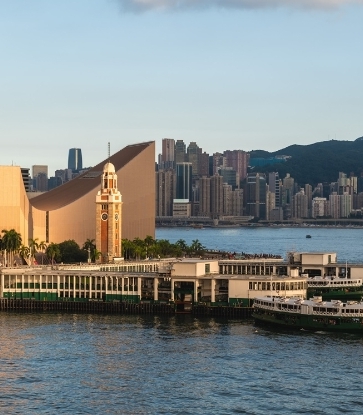As the weather gets hotter and humidity rises, you may catch the refreshing scent of bamboo leaves in the air. Dragon Boat Festival is fast approaching, and it’s that time of the year to savour the hearty festive treat: rice dumplings.
During the Warring States period when the Qin State attacked the Chu state, poet Qu Yuan was in such despair for not being able to realise his political ideals that he grabbed a large rock and threw himself into the Miluo River on the fifth of May of the Chinese lunar calendar. It was said that after the death of Qu Yuan, people threw food into the river as sacrifice, but Jiaolong, a mythical dragon-like creature, would steal and eat the food. Knowing that Jiaolong feared chinaberry leaves and colourful silk threads, people wrapped rice dumplings in leaves to protect their offerings to Qu Yuan. Overtime, eating rice dumplings became a tradition of the Dragon Boat Festival.
Eating rice dumplings during Dragon Boat Festival has been a tradition for thousands of years. Rice dumplings take on completely different looks in Japan and Southeast Asian countries. In China, rice dumplings from different regions also have plenty of dissimilarities – from ingredients to the leaves used to wrap these dumplings.
Relatively large and can appear in shapes of slanted rectangle or triangle, the northern Beijing-style rice dumplings are made with glutinous rice or millet, and are filled with red dates and red bean paste; in the south, Cantonese-style dumplings can be pyramids, tetrahedrons or pillow-shaped, with both savoury and sweet varieties. Sweet options include the alkaline dumplings and red bean dumplings, while savoury ones are made with glutinous rice, salted egg yolk, pork belly and mung beans, and sometimes with fillings such as shiitake mushrooms, dried shrimp, conpoy, chestnuts and peanuts. The Guangdong region also has other interesting styles of rice dumplings, such as those from Shaoxing, Taishan and Zhongshan.


Between the north and the south is the prosperous Jiangnan region, here it refers to the cities of Jiaxing and Huzhou in the Zhejiang province. Jiaxing and Huzhou are famous for their savoury pork rice dumplings and sweet red bean rice dumplings. Due to their close proximity to the modern and better-known city of Shanghai, those dumplings have come to be recognised as “Shanghai-style rice dumplings”, and also referred to as “Jia Hu rice dumplings” (嘉湖糉).
A defining characteristic of Shanghainese rice dumplings is the use of both light and dark soy sauce for marinating the glutinous rice. Shanghainese soy sauce is rich but not salty, giving the cooked glutinous rice a gorgeous caramel colour. Elongated and shaped like a pillow, the dumplings are wrapped in Huangshan bamboo leaves, which are longer, wider and more flexible.
When it comes to fillings, savoury dumplings tend to contain salted pork and ham, while sweet dumplings are made with red bean paste. They are much simpler in comparison with Cantonese-style dumplings, but the fresh aroma of leaves and the sponginess of glutinous rice are much more pronounced in the Shanghainese style.

The Shanghainese enjoy rice dumplings as snacks all year round, so it’s not uncommon to see families stock up on these parcels of tastiness at home. In Hong Kong, however, Shanghainese dumplings have become something exotic, and authentic Jia Hu rice dumplings are not easy to find. Shanghainese grocery stores Old San Yang and New Sam Yung have become the go-to places for buying Shanghainese rice dumplings. Karwoo in Shek Kip Mei is another spot where diners go to seek out traditional Shanghainese flavours. When it comes to MICHELIN Shanghainese restaurants in Hong Kong, very few offer homemade rice dumplings. Among them is Yè Shanghai, where you can find rice dumplings with salted pork and salted egg yolk. Each grain of rice has a nice oily sheen with a mild umami from the soy sauce. Together with the brightly-coloured salted egg yolk and fatty pork, the rice dumpling is a luscious, hearty treat.
Want to enjoy Shanghainese rice dumplings even after Dragon Boat Festival? MICHELIN-selected restaurant Din Tai Fung
RELATED: Dragon Boat Festival For Beginners: Cantonese Rice Dumplings
Photos by Gloria Chung @foodandtravelhk
Article written by Gloria Chung, translated by Iris Wong. Read original article here.





















